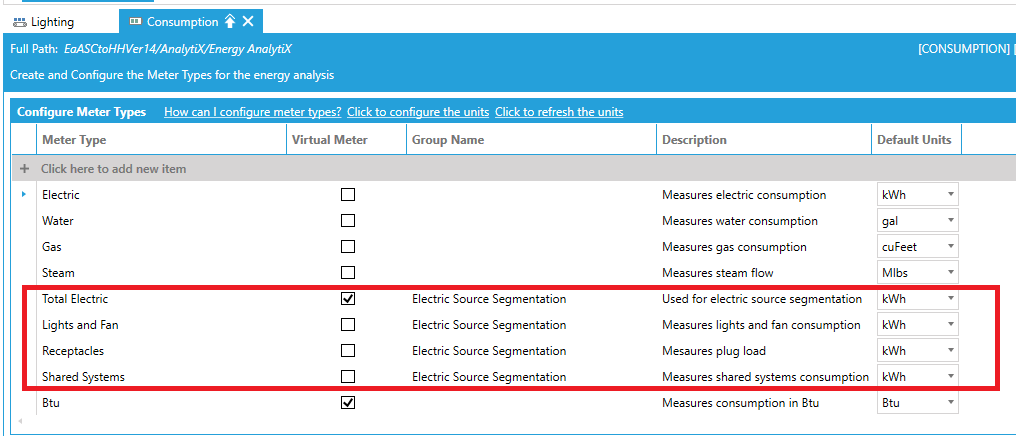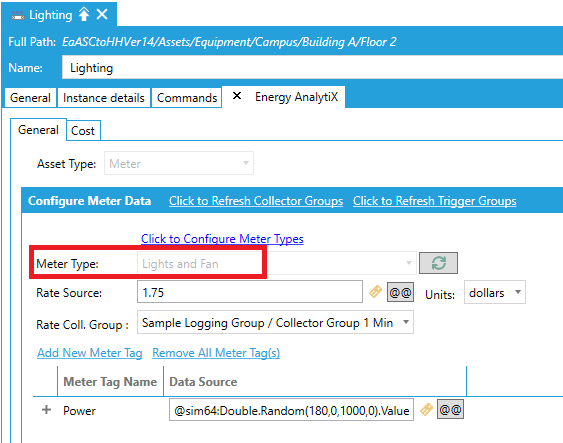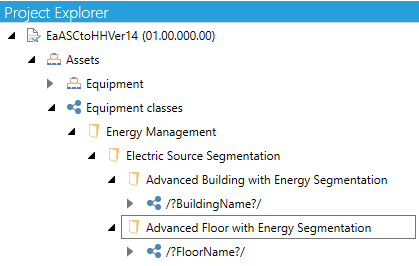|
|
The features on this page require a GENESIS64 Advanced license and are not available with GENESIS64 Basic SCADA . |
|
|
The features on this page require a GENESIS64 Advanced license and are not available with GENESIS64 Basic SCADA . |
This scenario applies to cases where we would like to have energy source segmentation for the same type of energy source. For example, consider the screenshot below:
Energy Source Segmentation Scenario

We would like to do a segmentation analysis for an electric data source, where we would like to look at an electric source consumed by:
Lighting
Lights in asset
Receptables
Electric outlet-based energy consumption
Shared Systems
Mechanical, AC, heating elements etc
Here are the steps to accomplish this energy source segmentation scenario
Step 1: Define meter types for the segmentation data (such as Lighting etc.) and a virtual meter type for aggregating all of the electric consumption.
Here we will define the meter types we will need for electric source segmentation analysis.
Meter Type Definition for Electric Source Segmentation Analysis

In the screenshot above, Total Electric is the virtual meter type we will use to aggregate all electric consumption (Lighting + Receptables + Shared Systems).
Step 2: Define energy meters, one for each segmentation related meter type.
In this step, we will need to define an energy meter for each segmentation area under the energy asset
Energy Meter Structure for Electric Source Segmentation

Sample Energy Meter for Electric Source Segmentation Analysis

Step 3: Define energy calculations.
In this final step, we will define related energy calculations for each segmentation area as well as an overall energy consumption calculation to represent the total electric consumption (of virtual meter type).
Energy Calculations for Electric Source Segmentation

To facilitate deployment of electric source segmentation, we have pre-defined equipment classes, which can be utilized to save energy application deployment time.
Energy Source Segmentation Related Equipment Classes

See Also:
Energy Unit Conversions Support
Using Variable Energy Meter Structures in AssetWorX
Energy Allocation Scenario - Simple
Energy Allocation Scenario - Advanced with Unit Conversion